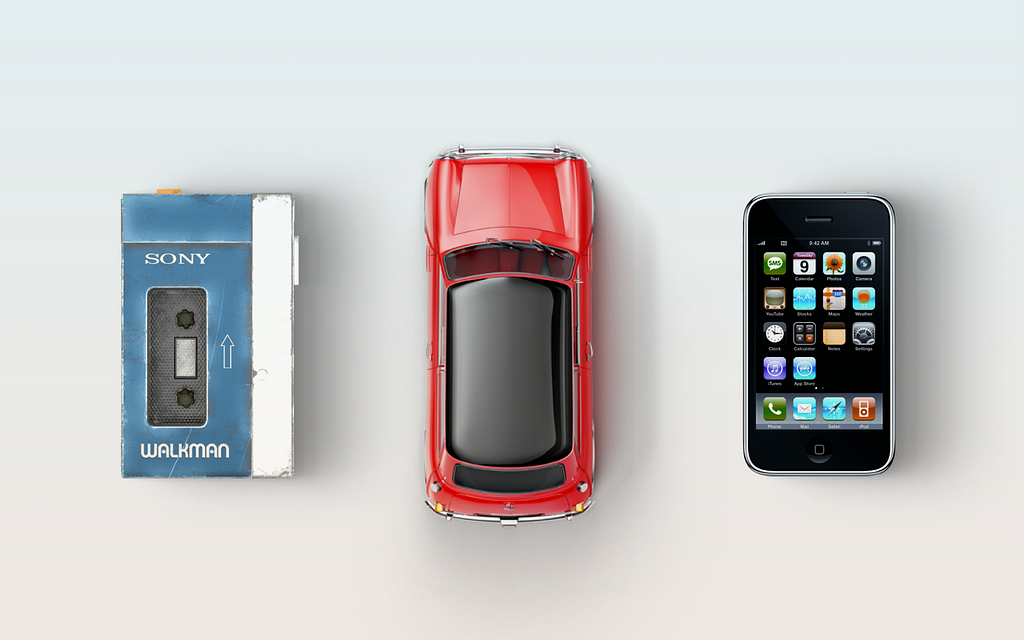
It’s always interesting to watch how companies approach the building of their new products. During the market research phase, companies are trying to future-proof every detail to ensure it will be popular among users and bring more money to the company.
Research methodologies and strategies have been improving since the beginning of the 20th century. Some companies were collecting data and heavily relied on it; some thought that not every feedback should be considered, and others didn’t find customer research useful in building a product.
In this article, I’m going over Sony and the creation of the Walkman player, BMC and the creation of the Mini Cooper and last but not least, Apple and the creation of the iPhone. These iconic products may seem too different, but they share many exciting insights into how and why they were born.
Sony Walkman: “A tape recorder that didn’t record”.

The story of Sony Walkman’s creation is fascinating, and one of the essential parts of it is the market research that management received right before the launch.
In the past, Sony and many other Japanese companies heavily relied on the research information they got directly from wholesalers and retailers in the distribution channels. Usually, they sent employees to dealers and other channel members to learn about shipments, inventory levels, retail sales, and customer feedback.
That was the way Sony conducted its research as well. The company wanted to collect data relevant to consumer attitudes about the product or how customers will interact with it, but they weren’t interested in the research that was remote from actual customer behaviour.
“A tape player, which could not record, would never catch on,” was stated in the market research that Akio Morita, the company chairman, received before the launch of the player.
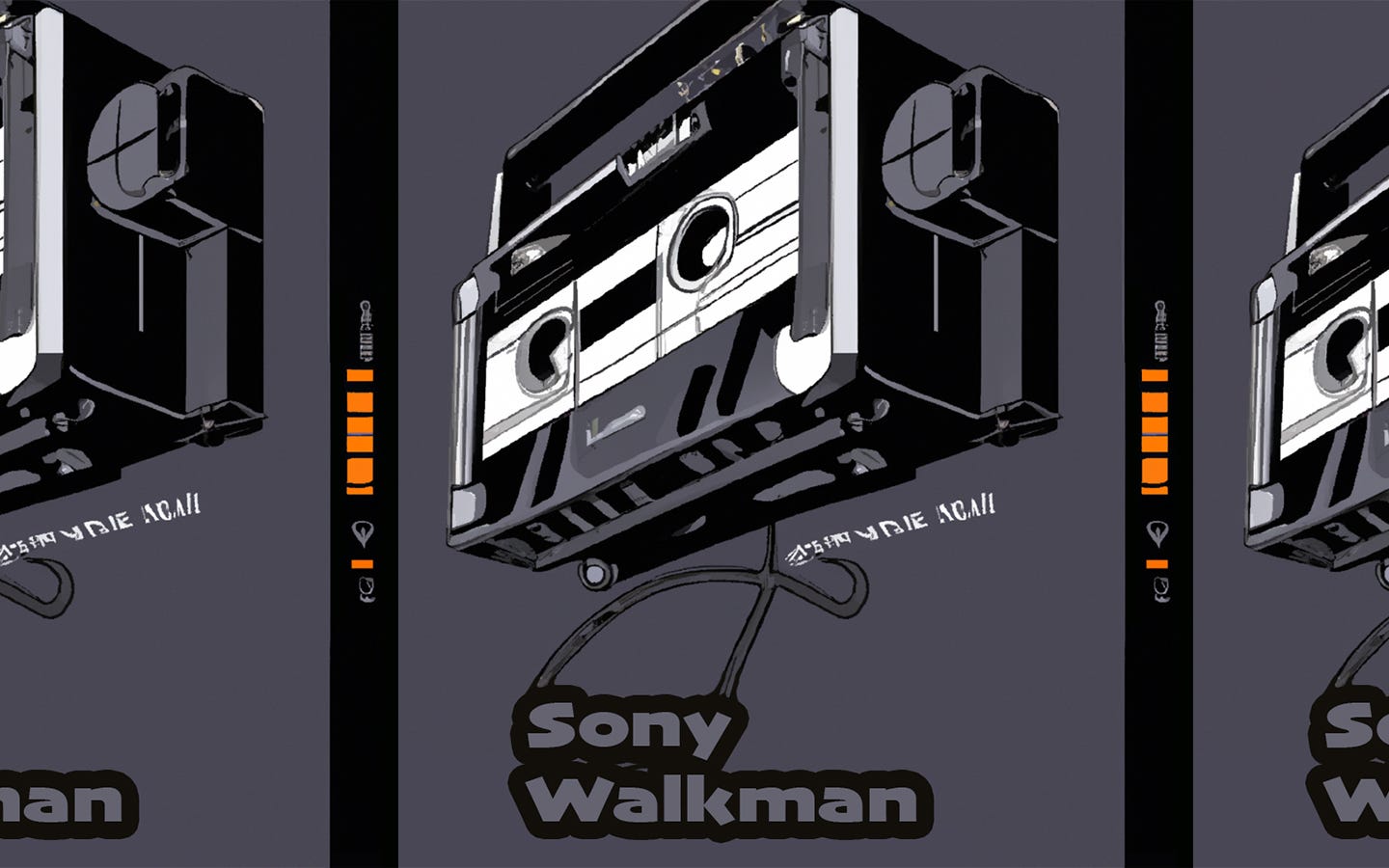
Let’s come back to the point of why Sony created the Walkman player. Portable players existed before, but Sony set a new level of sound quality in a portable device that didn’t exist before.
Before the Walkman, portable players were equipped with sound recording ability, but the team couldn’t fit this function into the player without losing the main characteristics of the Walkman: portability, lightweight and sound quality.
During the build phase, the team realized they could not add a proper recording feature along with the new, improved sound quality of a portable player. The decision was to concentrate on a player without a recording feature and focus on the market of music lovers.
…and as you know, Akio Morita made a decision to release the Sony Walkman player anyway and ordered 30,000 units. Just to understand the confidence: monthly sales of the most-popular tape recorder averaged 15,000 units. Just for the record, those 30,000 units have been sold in the first two months after release.
Sony showed consumers something they couldn’t imagine. Something that is truly hard to get feedback on during the research phase. Akio Morita approved the project (despite the research that wasn’t in favour of the Walkman player’s launch) and helped Sony to become one of the most successful companies in the consumer electronics industry.
Mini Cooper: “Initial resistance to a product so different — the shock
of the new”.

The path of the first Mini Cooper (or The Austin Se7en and Morris Mini-Minor as they were called at that time) to its customers was very bumpy.
Mini Cooper was an after-war product focused on small size and low petroleum consumption. During those days, more and more people were building their lives around car ownership, resulting drastic increase in gas prices.
When the Mini team was working on this project, they didn’t do any market analysis or product fit research. The only thing they knew for sure was the need for an economical car that would help people save money on gas and take up less space on the road. Every decision they made during the build phase was aimed at saving space and improving efficiency. Low consumption was a polar star that helped the team to make decisions along the way.

Alec Issigonis, the designer of the first Mini, was obsessed with these qualities: it had to be smaller than the Minor car, extremely economical with enough room for four adult passengers. Issigonis got two years and complete control over the project to build the v1.
The car had many technical innovations and some visual differences. For example, a large circular dial that combines a speedometer, fuel gauge, and warning lights for oil and battery. (picture of a dial!)Moreover, these features are located in the middle of a dashboard (instead of being in front of the driver, behind the wheel). Even today, this dashboard is very surprising when you first sit in the Mini Cooper. Another example was a redesigned gearbox that allowed to decrease the car’s length and make it a front-wheel-drive vehicle.
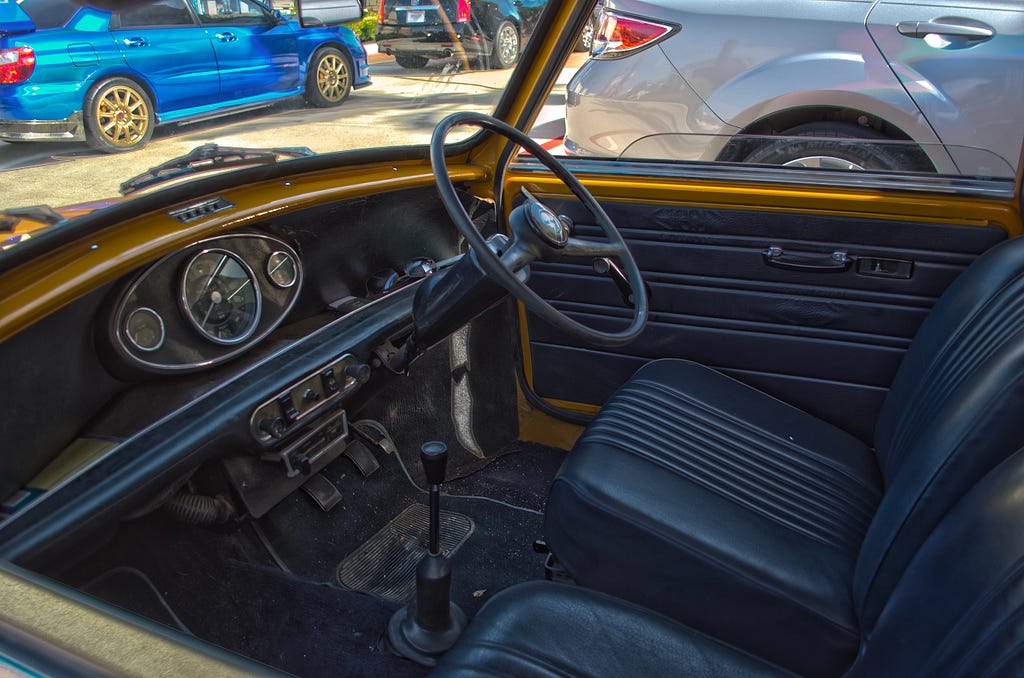
Alec Issigonis fully envisioned the first Mini to the detail. For example, he decided not to include a radio because he didn’t like listening to a radio while driving (Today, all Minis come with a pre-build radio. At the end of the day, visionaries also make mistakes). His design vision defined the car’s final look with no chrome excesses and aircraft-inspired fins, featuring simple old-fashioned front windows. The team has made all these decisions based on their perception of the car, the experience and the future vision.
Launching the Mini was a combination of car industry tradition and bold thinking. Initial resistance quickly turned to product success and made a huge impact on the car world and became a symbol of Britain’s industrial innovation.
After the launch, the Mini project was almost claimed as a failure because it was so different from other cars. Resistance was coming from the shock of the new, but when people tried the first Mini for the first time, they were immediately stunned: stability on the road was exceptional. Some people said it was like a “go-kart sensation to the streets”.
After two years, in 1960, the Mini became a superstar in the car world. Drivers across Europe were discovering Mini more and more; it turned out as a huge success for British Motor Corporation.
The Mini’s birth story shows us the importance of defining the main problem you’re trying to solve for your customers. So if something comes up and you aren’t able to gather more data, choose a solution that would fit the original vision.
Do not be afraid of innovating: in the middle of the 20th century, small and low-consumption cars weren’t a thing, and Issigonis and his team knew why they should try to make something that would stand out.
iPhone: “Too expensive to do well in the market”.
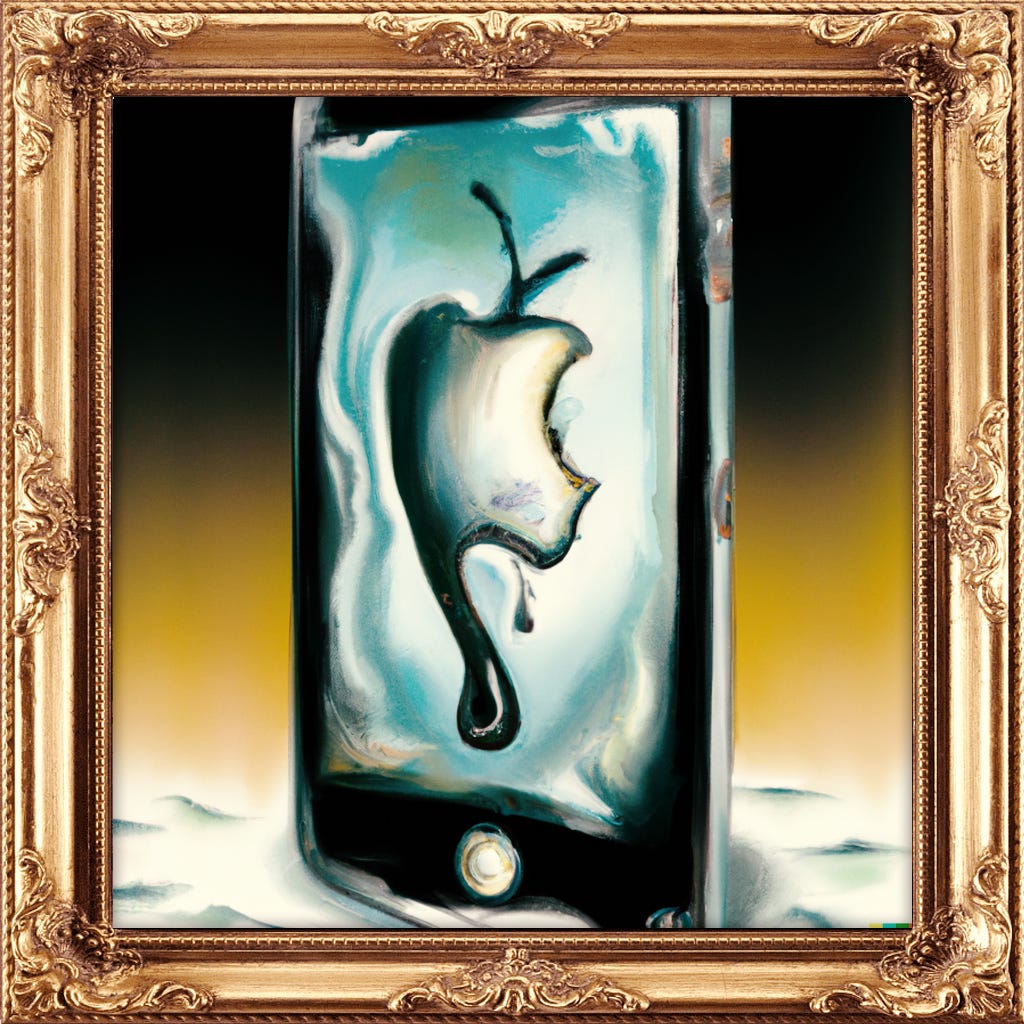
There are dozens of books and articles about how the first iPhone was envisioned and built, lots of stories and insights from former Apple employees. I will only focus on how key decisions were made and what was the main driver of an iPhone creation.
Today, almost everybody knows that Apple co-founder Steve Jobs wasn’t a big fan of market research. In his biography, he shares: “Our job is to figure out what they’re going to want before they do. People don’t know what they want until you show it to them. That’s why I never rely on market research. Our task is to read things that are not yet on the page.”
The first iPhone was released on June 29, 2007, and received mostly positive reviews but was criticized for the internet speed, poor cell connection, difficult messaging and lacking ”all other sorts of features that are basically assumed to be in most high-end multimedia phones those days.”
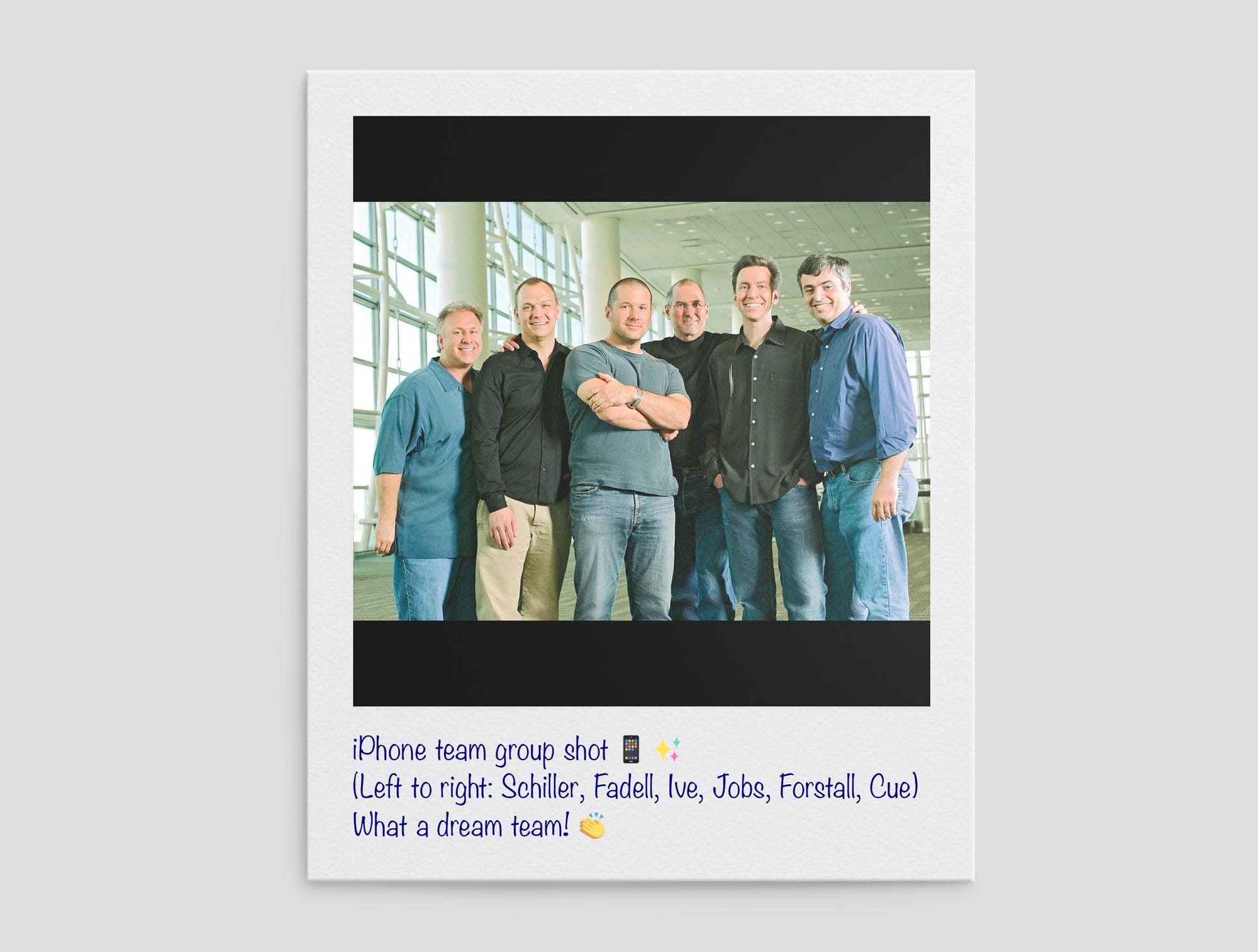
Features and main ideas that went into the first iPhone came directly from Steve Jobs and the team, including but not limited to Jonny Ive, Tony Fadell, Scott Forstall, Phill Schiller, and Eddie Cue.
“When we were creating the iPhone — we were solving for a pain.” — said Tony Fadell in one of his tweets celebrating the 15th anniversary of the iPhone launch. During the iPhone development, right questions were asked. The team knew the disadvantages of existing mobile devices: poor experience of core features like internet browsing, messaging, photos, etc. Basically, the team defined problems they saw in existing technology and came up with ideas on how to fix them in order to enjoy the magic of technology.
Despite the fact they didn’t ask what consumers wanted, the team at Apple built and tested a few dozens of prototypes internally. For example, the size of the smartphone was selected to be 3.5" after understanding that this is the perfect size for an average person’s palm.

After the launch, iPhone received a good portion of critique and comments from industry leaders that the product would never succeed on a larger scale.
“There’s no chance that the iPhone is going to get any significant market share” Steve Ballmer, CEO of Microsoft
The Futurist: We Predict the iPhone Will Bomb by a Techcrunch Contributor
Why the iPhone Will Fail by Engadget.com
The rest is history. Today, Apple is one the most valued companies in the world and according to Counterpoint market research iPhone has 48% of the market share, almost half of the whole smartphone market.
In the end
What similarities can we see in the creation process of these products?
Each of these use cases is an excellent example of how a new product can be drastically better than other products on the market and become insanely popular in the next couple of years after release.
Another similarity is leaders-visionaries with a will to change the industry. Steve Jobs, Akio Morita and Alec Issigonis made a high-cost decision in favour of an idea that would allow them to move the company to a completely next level and sell millions of products.
Also, they all were guided by the main idea. For Sony Walkman, it was the sound quality of a portable cassette player; for Mini, it was the efficiency of the car; for iPhone, it was making a phone smart.
After all, the products gained popularity, and the companies started doing product research in different capacities. Nowadays, Sony, Mini and Apple are constantly in conversation with their customers to refine and improve products while still guided by the central vision.
Sources
Market Research the Japanese Way
The first Sony Walkman goes on sale
History of MINI | Why MINI | MINI UK
The iPhone Turns 15: Read PCMag’s First, Skeptical iPhone Review
Tony Fadell (@tfadell) / Twitter
Inside Apple’s 6-Month Race to Make the First iPhone a Reality
Research vs Vision: the origin story of Sony Walkman, Mini Cooper, and the iPhone was originally published in UX Collective on Medium, where people are continuing the conversation by highlighting and responding to this story.